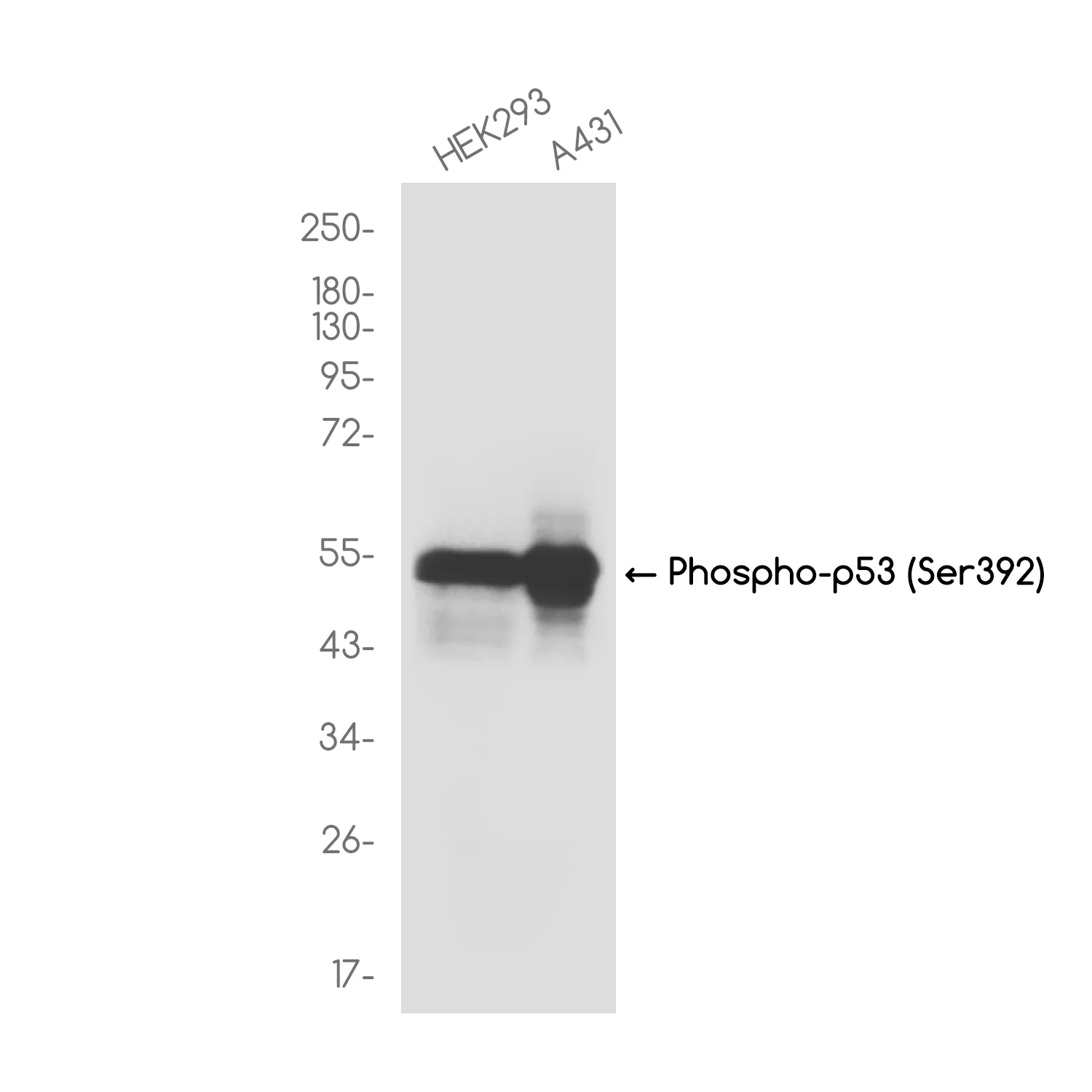
Size:100μL Price:$300
Size:200μL Price:$520
Application:WB,IHC,IP
Reactivity:Human, Mouse, Rat
Conjugate:Unconjugated
Optional conjugates: Biotin, FITC (free of charge). See other 26 conjugates.
Gene Name:TP53
Summary
| Production Name | Phospho-p53 (Ser392) Rabbit Monoclonal Antibody |
| Description | Recombinant rabbit monoclonal antibody |
| Host | Rabbit |
| Application | WB,IHC,IP |
| Reactivity | Human, Mouse, Rat |
Performance
| Conjugation | Unconjugated |
| Modification | Phosphorylated |
| Isotype | IgG |
| Clonality | Monoclonal |
| Form | Liquid |
| Storage | Store at 4°C short term. Aliquot and store at -20°C long term. Avoid freeze/thaw cycles. |
| Buffer | Liquid in 50mM Tris-Glycine(pH 7.4), 0.15M NaCl, 40%Glycerol, 0.01% sodium azide and 0.05% protective protein. |
| Purification | Affinity Purification |
Immunogen
| Gene Name | TP53 |
| Alternative Names | TP53; P53; Cellular tumor antigen p53; Antigen NY-CO-13; Phosphoprotein p53; Tumor suppressor p53 |
| Gene ID | 7157 |
| SwissProt ID | P04637 |
Application
| Dilution Ratio | WB 1:500-1:1000,IHC 1:50-1:100,IP 1:20-1:50 |
| Molecular Weight | Calculated MW:44 kDa;Observed MW: 53 kDa |
Background
Tumor protein p53, a nuclear protein, plays an essential role in the regulation of cell cycle, specifically in the transition from G0 to G1. It is found in very low levels in normal cells, however, in a variety of transformed cell lines, it is expressed in high amounts, and believed to contribute to transformation and malignancy. p53 is a DNA-binding protein containing DNA-binding, oligomerization and transcription activation domains.
Research Area
Cell Biology
